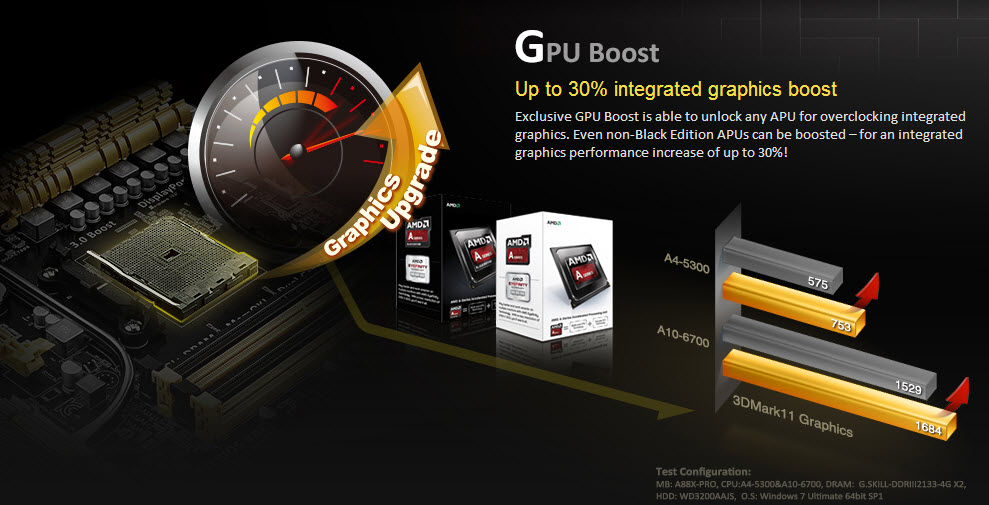NVIDIA GeForce RTX 4000 Series Release Date, Price, Specs
Note: this is a developing story.
Nvidia’s next-gen GPUs have been released. We are talking about the Nvidia GeForce RTX 4090 and Nvidia GeForce RTX 4080 (Both 12GB and 16GB versions).
To help visualize the potential of the RTX 4000 GPUs, we have considered NVIDIA’s previous GPU lineup, the RTX 3000 series, and the performance improvements over the RTX 2000 series.
Although AMD will also be announcing their RDNA 3 series of GPUs on October 3, 2022, so make sure to check that out too!
If you are interested in what the next generation of NVIDIA graphic cards will bring, this article contains the information you are looking for.
Let’s get right into it!
Updates +
- October 5, 2022: Added new performance benchmarks, removed outdated information and more.
- September 22, 2022: Added news about EVGA leaving NVIDIA for good.
- September 21, 2022: Added specifications, release date, price and performance benchmarks about the RTX 4090 and RTX 4080 GPUs.
- August 24, 2022: Updated specifications for the RTX 4090 Ti, 4090 and 4080.
- August 16, 2022: Added news that NVIDIA is pushing RTX 3000 sales to open up room for RTX 4000.
- August 11, 2022: Added news on reduced power draw and new specifications for the RTX 4080 and 4070.
- August 4, 2022: Added new release date information, new specifications and performance benchmarks.
Table of ContentsShow
Release Date
NVIDIA shared release date information only for the RTX 4090 and RTX 4080 on the September 20th event. Here are the dates:
The RTX 4090 will be released on October 12th with a price tag of $1599. That’s $100 more expensive than its predecessor, the RTX 3090.
At the same event, Jensen Huang also announced that the RTX 4080 will come in two iterations. A 16GB and a 12GB version.
A 16GB and a 12GB version.
However, there may be a big difference between the 16GB and 12GB RTX 4080 in terms of performance, but more on that later.
For the rest of the lineup, we’ll get more information as the 4090 and 4080 release.
Bear in mind that NVIDIA might be taking a slower approach for the release of the RTX 4000 series to try and sell the excess stock of RTX 3000 GPUs.
By 2024, they believe they will have Ampere Next Next ready, which is supposedly the RTX 5000 series.
Keep in mind that EVGA will no longer manufacture NVIDIA graphics cards. This decision is supposedly a consequence of NVIDIA’s years of mistreatment.
EVGA’s spokesperson specifically mentioned that NVIDIA kept EVGA (and probably other partners) on the GPU’s prices and constantly undercutting them, seriously reducing their profit margins while NVIDIA’s profit margins shot up.
So, unfortunately, if you want an EVGA RTX 4000 card, there won’t be any.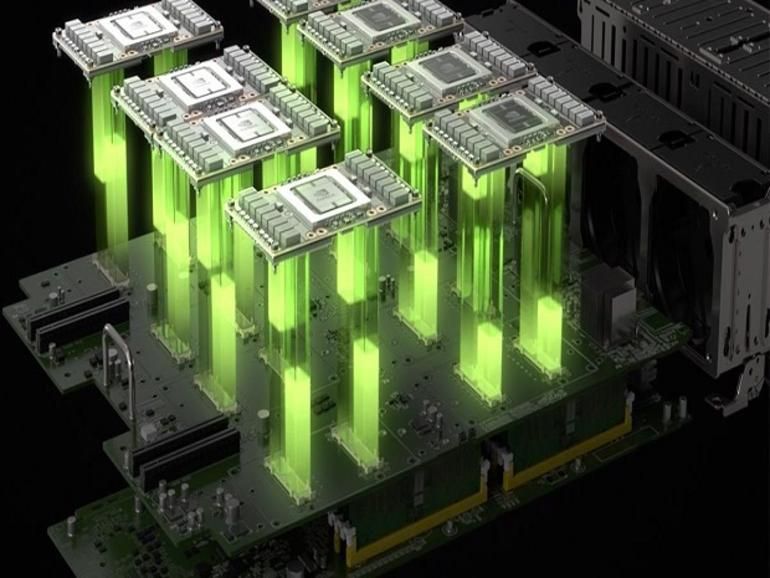 Although, EVGA will continue manufacturing and warranty support for the 3000 series.
Although, EVGA will continue manufacturing and warranty support for the 3000 series.
Price
We hoped that the interest drop in crypto mining and improvement in chip shortage would lead to better price points for future graphics cards.
Unfortunately, that does not seem to be the case. NVIDIA takes a completely different approach and puts substantially more expensive price tags on its GPUs.
Here are the price tags:
- RTX 4060 – $330 (not confirmed)
- RTX 4070 – $500 (not confirmed)
- RTX 4080 12GB – $899
- RTX 4080 16GB – $1199
- RTX 4090 – $1599
Switching to TSMC’s 4N process is definitely an expensive move, but does it justify a 30% (from $700 to $899) price increase? The RTX 4080 16GB variant is 56% more expensive than the 12GB RTX 3080.
Additionally, the RTX 4090 is $100 more expensive than the RTX 3090. A Gigabyte GeForce RTX 4090 Gaming OC was spotted on Newegg for $1,699. So, about $100 over MSRP, while the Gaming X Tri variant is at MSRP.
A Gigabyte GeForce RTX 4090 Gaming OC was spotted on Newegg for $1,699. So, about $100 over MSRP, while the Gaming X Tri variant is at MSRP.
For Europe, though, the pricing news is even worse. The lowest-priced RTX 4090 is around 1999 EUR and goes up to 2569 EUR, depending on the retailer.
So, what’s the deal with these prices?
Well, either the performance boost from RTX 3000 to RTX 4000 is so large that NVIDIA justifies a 50% price increase, or they priced these new GPUs higher to leave room for their RTX 3000 GPUs to sell.
It may sound like a conspiracy, but there are multiple leaks suggesting that NVIDIA is doing everything to sell RTX 3000 stock. They even tried to backpedal from their investment in TSMC to reduce RTX 4000 supply.
Because there is too much stock of GA102, Nvidia has resumed the supply of 3080 12G.
The 3080 12G just stopped production for less than two months, and recently resumed production quickly.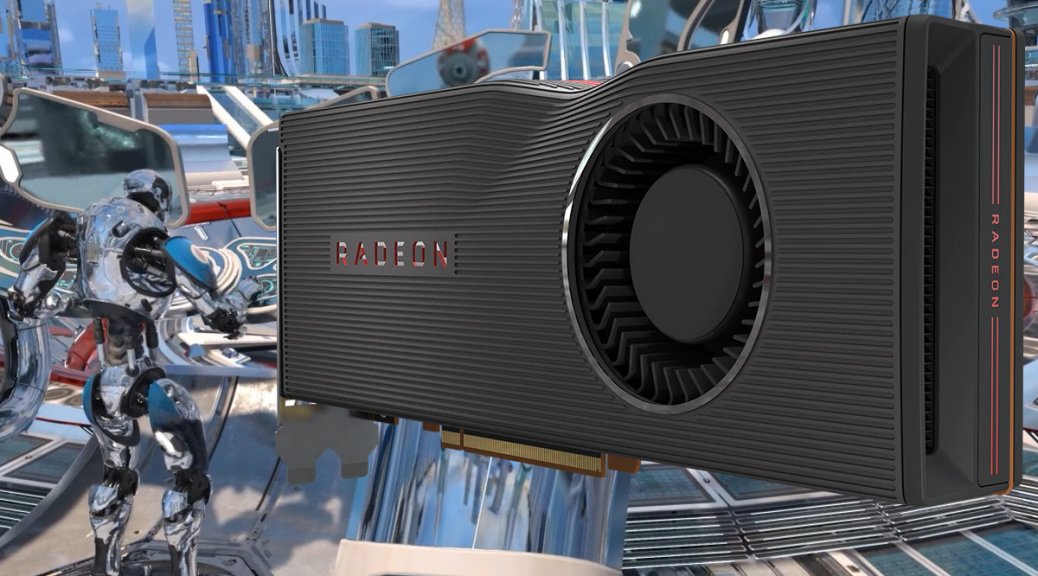
— MEGAsizeGPU (@Zed__Wang) August 14, 2022
Let’s see if that performance increase is really worth it!
Specifications
Source: NVIDIA
The Ada Lovelace microarchitecture is built on TSMC’s 4N process, a solid leap from the 8nm Ampere (Samsung) chips.
A smaller process node will result in two significant benefits: more performance for less power.
Here are NVIDIA’s claims of Ada Lovelace’s improvements over older generations like Ampere and Turing:
Source: NVIDIA
RTX 4000 Series (vs. RTX 3090) specification comparison table:
| Specifications | RTX 3090 | RTX 4090 Ti (The Beast) | RTX 4090 | RTX 4080 16GB | RTX 4080 12GB | RTX 4070 | RTX 4060 |
|---|---|---|---|---|---|---|---|
| GPU Die | GA102 | AD102 | AD102 | AD103 | AD103 | AD104 | AD104 |
| Process | Samsung 8nm | TSMC 5nm | TSMC 5nm | TSMC 5nm | TSMC 5nm | TSMC 5nm | TSMC 5nm |
| Base Clock Speed | 1395 MHz | ? | 2230 MHz | 2510 MHz | 2610 MHz | 2310 MHz | ? |
| Boost Clock Speed | 1695 MHz | ? | 2520 MHz | 2210 MHz | 2310 MHz | 2610 — 2800 MHz | ? |
| CUDA Cores | 10496 | 18176 | 16384 | 9728 | 7680 | 7680 | 4608 |
| Bus Width | 384-bit | 384-bit | 384-bit | 256-bit | 192-bit | 192-bit | 192-bit |
| Memory | 24GB GDDR6X | 48GB GDDR6X | 24GB GDDR6X | 16GB GDDR6X | 12GB GDDR6X | 12GB GDDR6X | 8GB GDDR6/X |
| Memory Speed | 24Gbps | 24Gbps | 21Gbps | 23Gbps | 21Gbps | 21Gbps | ? |
| Bandwidth | 936. 2 GB/s 2 GB/s |
? | 1008 GB/s | 736 GB/s | 504 GB/s | 504 GB/s | ? |
| L2 Cache | 6MB | 96MB | 96MB | 64MB | 64MB | 48MB | 48MB |
| Total Board Power | 350W | 800W? | 450W | 320W | 285W | 285W | 200W |
| Release Date | September 1st, 2020 | TBA 2023 | October 12, 2022 | November, 2022 | November 2022 | TBA/Q4 2022 | TBA/2022/23 |
Note: Data on RTX 4070 and RTX 4060 is based on leaks due to missing official information.
For more information, here’s NVIDIA’s comparison of the three new upcoming GPUs with the previous generation lineup.
Credit: NVIDIA
RTX 4090 Ti/The Beast
The leaks on NVIDIA’s “true” flagship are a bit vague. This AD102 chip that’s been referred to as the “The Beast” might be the 4090 Ti, Titan, or maybe even get a completely different naming scheme.
Supposedly, this flagship SKU will have 12,432 CUDA cores and 48GB of GDDR6X running at 24 Gbps. Bandwidth will be well over one terabyte, considering that the regular 4090 will have a terabyte of bandwidth.
RTX 4090
Credit: Moore’s Law is Dead
The GeForce RTX 4090 has 16384 CUDA cores, compared to 10496 on the GeForce RTX 3090. So about a 50% increase in CUDA, but it also boosts up to 2520 MHz, which, again, is quite higher than the 3090.
That’s not the only thing that NVIDIA has increased, though. It is rated at 450W TDP, 100W more than its predecessor.
RTX 4080
As we mentioned previously, the RTX 4080 has two versions.
One comes with 16GB of VRAM, while the other will have 12GB. Unfortunately, that’s not good news. The 12GB GPU is actually a cut-down version of the 16GB RTX 4080.
It has 21% fewer CUDA cores (from 9728 to 7680),192-bit memory interface width (rather than 256-bit), and is rated at 285W rather than 320W.
Many refer to this inferior RTX 4080 as “the real RTX 4070.” And with a price of $899 or $1199 for the better RTX 4080, this will be a difficult purchase for most people.
In NVIDIA’s chart, we see a couple of games that don’t perform as well as some other newer titles.
From these three games alone, we can see that the 12GB RTX 4080 may have trouble keeping up with the RTX 3090 Ti on multiple occasions, especially with older games or even new games that do not support DLSS.
To put this into perspective, the $700 RTX 3080 performed more than 20% faster than the $1000 RTX 2080 Ti flagship GPU.
RTX 4070
The RTX 4070 is where everyone’s focus should be, especially now with the newer specifications leaks from kopite7kimi.
There is an update of RTX 4070.
PG141-SKU331
7680FP32
12G 21Gbps GDDR6X
300W
TSE >11000— kopite7kimi (@kopite7kimi) August 4, 2022
If the 4070 gets 12GB of GDDR6X VRAM @ 21Gbps instead of 10GB GDDR6 @ 19 Gbps (like previous leaks suggested), it could be as fast as the RTX 3090 Ti.
This performance estimate is supported by the leaks claiming that the 4070 will have a max boost of 2800 MHz and a boost clock of 2610 MHz, which is higher than the 4090 clock speeds.
The memory bus has also changed from 160-bit to 192-bit. The power draw is still estimated at 285W, which might be the only downside for the RTX 4070.
Performance
During NVIDIA’s announcement of the RTX 4090 and the two RTX 4080 iterations, they also published some performance data.
Here is RTX 4090 vs. RTX 3090 Ti chart:
Source: NVIDIA
Supposedly, the RTX 4090 performs at worst, 2x faster than the RTX 3090 Ti, and at its best, it is more than 4x faster in Cyberpunk 2077.
However, consider the footnote below. It’s running DLSS Frame Generation or DLSS 3.0, which supposedly doubles in-game FPS. More on DLSS 3.0 later.
To confirm these performance claims, we’ll need to wait a bit for NVIDIA to lift the review NDAs so we can share some third-party benchmarks.
For example, in this Overwatch benchmark below, the RTX 4090 performs 2x faster than the RTX 3080, which isn’t exactly what NVIDIA promised.
Here’s a gameplay video of Overwatch running at 500 FPS:
The new flagship GPU also seems to perform pretty well in productivity tasks, cutting down the time needed to export 3D renders and video edits by half.
Source: NVIDIA
The RTX 4080 16GB is shown to provide two times better performance over the RTX 3080 Ti and up to 3x faster in Cyberpunk 2077 with the new Ray Tracing Overdrive.
Naturally, the gimped $899 12GB RTX 4080 isn’t as fast as we can see in the image below:
Again, this is with DLSS Frame Generation enabled.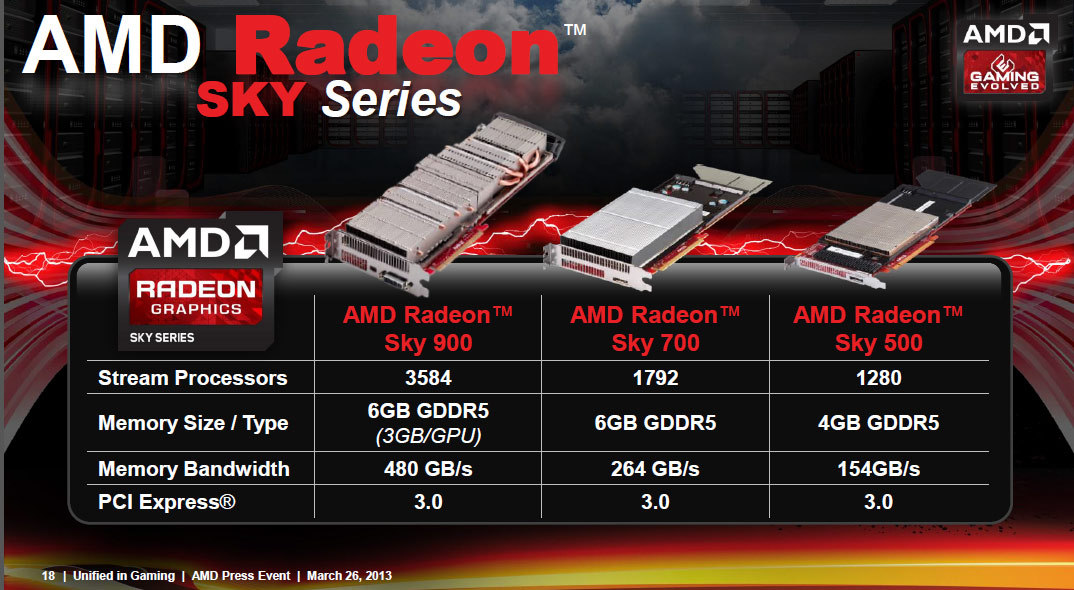 The huge performance advantage seems to come from the new ray tracing “Overdrive Mode” that will soon be available in Cyberpunk 2077.
The huge performance advantage seems to come from the new ray tracing “Overdrive Mode” that will soon be available in Cyberpunk 2077.
Here are some more benchmarks from NVIDIA:
In these “Next Generation” titles, RTX 4000 series may run up to 4x performance compared to the previous generation GPUs. But, what does that mean for “regular” games with no ray tracing or DLSS?
Well, in this chart above, we see the RTX 4080 12GB struggling to deliver FPS similar to the RTX 3090 Ti, while the 16GB variant is barely faster. This means that the 12GB RTX 4080 is only about 10% faster than its predecessor.
To understand where the performance gains claims are coming from, we’ll need to talk about Nvidia’s next DLSS update, 3.0.
DLSS 3.0
DLSS 3.0 is a serious upgrade over DLSS 2.0 version boosting FPS by up to 4x. Unfortunately, DLSS 3.0 will only be available to RTX 4000 cards (or newer).
Here’s how it works:
With the so-called “Optical Flow Accelerator,” a new part of the RTX GPUs, and by adding Optical Multi Frame Generation, NVIDIA brings serious FPS boosts to the table.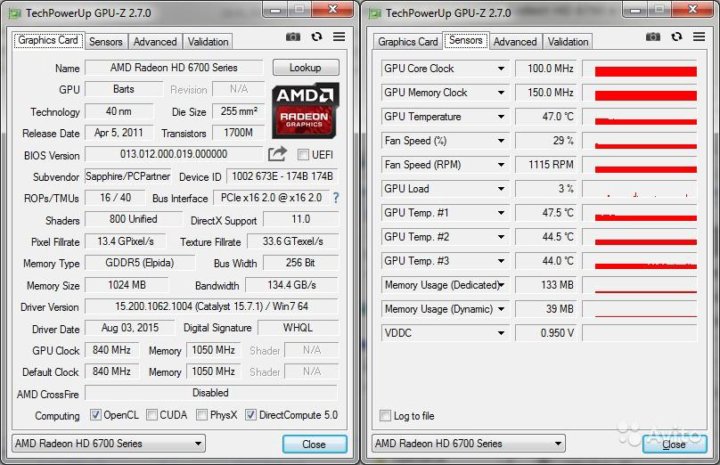
However, DLSS 3 will not be available for RTX 3000 and 2000 cards because they lack an Optical Flow Accelerator.
There are ongoing debates about whether these claims are true or if it’s just one of Nvidia’s marketing tricks to get people to buy their latest GPUs.
Either way, it’s a nice piece of technology, so let’s see what it can do!
Here’s DLSS 3 in Cyberpunk 2077 with an RTX 4000 card.
From this video, we see that DLSS indeed boosts FPS by up to 3-4x.
We also see this kind of performance improvement in the new ray tracing update for Portal.
Scalping & Price Increases
Image credit: Gizmodo
Throughout the last couple of years, ever since the release of the RTX 3000 series, scalping has become a huge trend.
This new trend skyrocketed the prices of new GPUs while considerably cutting down the supply. This shortage continues in 2022 as it did in 2021 and 2020.
Even the world’s largest semiconductor manufacturers, TSMC and Samsung, struggle to keep up with the demand.
Right now, you might be wondering: will this kind of scalping affect the RTX 4000 series? Unfortunately, we cannot know for sure, but at least we know that both TSMC and Samsung are investing in improving their manufacturing capacities.
We’ll know the status of RTX 4000 availability once the GPUs are released.
Until then, you can check back for future developments on the RTX 4000 Series!
Updates +
AMD RDNA 3 Release Date, Price And Specs [Oct. 2022 ]
2020 was an exciting time in both the PC and console worlds. We saw brand-new CPU and GPU releases from AMD and NVIDIA, but we also got the long-awaited next-gen consoles from Xbox and Sony.
These releases enjoyed significant performance improvements from their predecessors, generally thanks to the transition to a smaller (7nm) fabrication process from TSMC and Samsung.
TSMC already has a 5nm process in the works, and AMD plans to base its RDNA 3 and Zen 4 architecture on that. As a result, we have high expectations for performance improvements.
Let’s see what RDNA 3 GPUs will offer.
Updates +
- October 5, 2022: Changed featured image with RX 7000 design, added new specifications, new price estimates, and more.
- September 22, 2022: Added official release date information.
- September 19, 2022: Added new images and new power consumption-related information.
- August 24, 2022: Updated specifications on all SKUs.
- August 4, 2022: Added new SKU to the table, replaced outdated specifications and more.

- July 12, 2022: Replaced some outdated information under the “Architecture” segment.
- July 5, 2022: Added rumors on possible AI acceleration cores on RDNA 3 architecture.
- June 28, 2022: Added new power-related information and reworked some parts of the article.
- June 15, 2022: Added more specifications, release date rumors, and removed outdated information.
- June 3, 2022: Made a few grammar fixes.
- May 26, 2022: Added a rumor that RDNA3 will have Display Port 2.0.
- May 19, 2022: Another round of big changes to the article based on the news that Navi 31 will have a single GCD.
- May 11, 2022: Added information on refreshed RDNA 2 and RDNA 3 in Phoenix APUs.
- May 4, 2022: Revamped entire article in accordance with new specification information on RDNA 3, added new performance leaks, videos, and more.

- April 22, 2022: Added some release date leaks.
- April 12, 2022: Added more information on RX 7700 XT.
- March 30, 2022: Grammar fixes.
- March 24, 2022: Added RX 7700XT, RX 7900XT and Ada Lovelace performance leaks/guesses.
- March 15, 2022: Added more release date information.
- March 01, 2022: Small updates, nothing significant.
- February 20, 2022: Writing fixes.
- February 9, 2022: Added Lisa Su’s reconfirmation on RDNA 3’s release date and that AMD will secure a lot more GPU supply for 2022.
- January 31, 2022: Revamped some sentences throughout the article for improved readability.
- January 25, 2022: Added leak on potential Navi 21/22 GPUs as a stop-gap for RX 7000.
- January 13, 2022: Added new information from CES.
- December 22, 2021: Updated specifications on Navi 31, 32, and 33 based on greymon55’s latest leak.
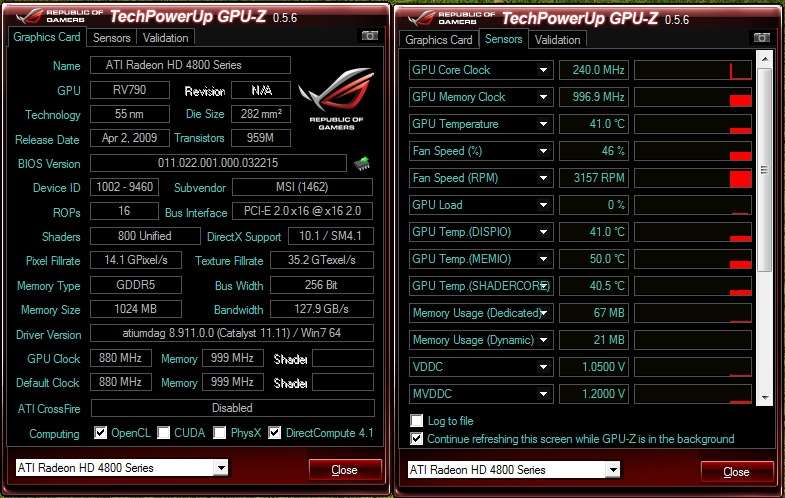
- December 14, 2021: Added information about new Accelerator Processor Die.
- December 6, 2021: General update, no new information.
- November 29, 2021: Reworked price estimates.
- November 22, 2021: Rephrased several sentences.
- November 15, 2021: Added new information on RDNA 3’s release date and modified text for improved readability.
- November 12, 2021: Improved specifications table layout for better user experience.
- November 8, 2021: Added rumor about 3D stacked Infinite Cache.
- November 3, 2021: Added information about RDNA 3’s tape-out.
- October 28, 2021: Fixed a few grammar errors.
- October 18, 2021: Added rumors about the PS5 Pro and the possibility of it using RDNA 3.
- October 12, 2021: Changed wording for improved readability.

- October 4, 2021: Added new changes regarding the core count of Navi 33.
- September 27, 2021: Made a few changes, mostly fixed some grammatical errors.
- September 20, 2021: Added rumors regarding the potential performance.
- September 13, 2021: Added more release date information.
- September 2, 2021: Added a table explaining the possible SKU lineup of RX 7000 and a new specification table of Navi 31, 32, 33 and 21.
- August 18, 2021: Added new specification leaks and a block diagram detailing the Navi 33 chip.
- July 28, 2021: Added some new leaks and removed some old ones to support AMD’s drop of Compute Units and the switch to Work Group Processors.
- June 23, 2021: Added more info on the release date and possible Zen3+ stop-gap solution.
- May 10, 2021: Added information on the potential performance of RDNA 3 GPUs based on a popular leaker KittyYYuko.

- April 6, 2021: Added official information claiming a 50% increase in efficiency.
Table of ContentsShow
Release Date
Image Source: Wccftech
Radeon’s senior vice president announced that RDNA 3 will launch on November 3rd!
Join us on November 3rd as we launch RDNA 3 to the world! More details to come soon! #RDNA3 #AMD pic.twitter.com/oftq1Fjrgt
— Scott Herkelman (@sherkelman) September 20, 2022
So, a bit later to the party compared to NVIDIA since they will launch the RTX 4090 on October 12. However, the RTX 4080 will come later in November, while AMD might launch most of the lineup at the same time.
NVIDIA’s mid-end SKUs, like the RTX 4070 and RTX 4060, are still not announced.
If you plan on waiting for RDNA 4, check out the roadmap below:
Price
Price
Currently, there haven’t been any credible leaks/rumors or official information regarding the pricing of the RDNA 3 lineup.
With NVIDIA’s decision to increase the pricing on all announced SKUs might be why AMD is keeping this information hush-hush.
Here are some of our estimates:
- Radeon RX 7900 XT– $1000 – $1500
- Radeon RX 7800/XT – $600 – $1000
- Radeon RX 7700/XT – $450
- Radeon RX 7600 – $350
- Radeon RX 7500 – $250
Supposedly, AMD’s new cards are much cheaper to produce, so the GPUs might end up with a much better price tag than NVIDIA.
Moore’s Law is Dead also leaked a source from an AIB company that AMD’s RX 7000 Series will allow for much better profits at MSRP compared to NVIDIA.
Specifications
A new generation of the RDNA architecture on a 5nm fabrication process (from TSMC) sounds promising.
But will switching to a 5nm process node hurt GPU supply? Well, here’s what Lisa Su had to say about that:
We’ve been working on the supply chain really for the last four or five quarters, knowing the growth that we have from a product standpoint and the visibility that we have from customers.
So in regards to [the] 2022 supply environment, we’ve made significant investments in wafer capacity, as well as substrate capacity and back-end capacity.
AMD CEO, Lisa Su – Q1 2022 AMD Earnings Call
Hopefully, we’ll see a proper supply of GPUs throughout 2022 and 2023.
Here’s a table of rumored specifications:
| Navi 21 | Navi 3X (RX ?) | Navi 31 (RX 900 XT?) | Navi 32 (RX 7800 XT?) | Navi 33 (RX 7600 XT?) | |
|---|---|---|---|---|---|
| SKU Name | 6900 XT | RX 7950 XT? | RX 7900 XT | RX 7800 XT | RX 7600 XT |
| Node | 7nm | 5nm + 6nm | 5nm + 6nm | 5nm + 6nm | 6nm |
| Chiplets | One – Monolithic |
2 GCD + ? MCD | 1 GCD + 6 MCDs | 1 GCD + 4 MCDs | 1 GCD — Monolithic |
| Shader Engines (SE) | 4 | 8 | 6 | 4 | 2 |
| Shader Arrays | 1 per SE | 16 | 12 | 2 per SE | 1 per SE |
| Work Group Processors (WGP) | 40 | 64 | 48 | 32 | 16 |
| Cores | 5120 | 16384 | 12288 | 7680 | 4096 |
| Memory | 16 GDDR6 | ? | 24GB GDDR6 21Gbps | 16GB GDDR6 18Gbps | 8GB GDDR6 18Gbps |
| Memory Speed | 18Gbps | ? | 18 Gbps | 18Gbps? | 18Gbps? |
| Memory Bandwidth | 512 GB/s | ? | 864 GB/s | 576 GB/s | 288 GB/s |
| Memory Bus | 256-bit | ? | 384-bit | 256-bit | 128-bit |
| Infinity Cache | 128 MB | ? | 96 MB | 64 MB | 32 MB |
| Release Date | December 2020 | 2023? | Q4 2022 | Q4 2022? | Q1 2023? |
Although there will probably be more SKUs in the Radeon RX 7000 Series, currently, there’s practically no information on them.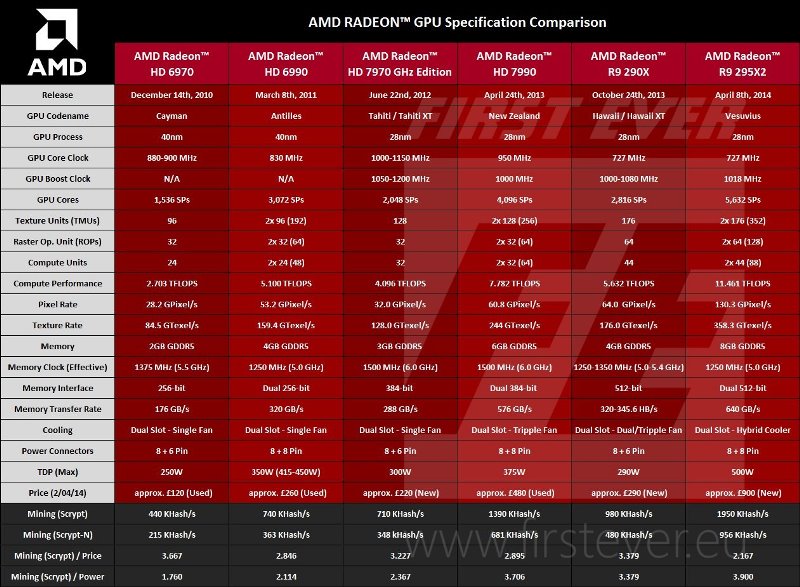
We expect XT and non-XT variants of most of the SKUs, excluding the RX 7900 XT. Furthermore, Twitter user, _rogame, leaked ids of 9 different RDNA 3 SKUs.
Some actual Navi33 ids
0x7480
0x7481
0x7483
0x748B
0x749F— _rogame (@_rogame) October 1, 2022
Regarding the GPU die, originally, rumors claimed that Navi 31 would have two chiplets with 80 CUs. However, AMD scrapped the two-GCD design (or the leaks/rumors were simply incorrect.)
New leaks say it’s one GCD per GPU paired with multiple MCMs (multi-cache Die). So, at least it will still be the first ever consumer chiplet design GPU.
Here’s a leak from 3DCenter explaining the specifications in Navi 31, 32, and 33:
AMD Navi 33/32/31 (updated) chip data, based on rumors & assumptions
As @kopite7kimi pointed out, old info from last Oct is outdated ?
updated:
– 20% less WGP
– no more double GCD for N31/N32
– 6 MCD for N31 = 384 MB IF$
– 4 MCD for N32 = 256 MB IF$https://t.co/rj2G2gi9CU pic.twitter.com/yDqeTTdSAT
— 3DCenter.org (@3DCenter_org) May 9, 2022
So, Navi 31 will have 6 MCDs paired with 1 GCD, while Navi 32 will have 4 MCDs with 1 GCD. And Navi 33 will be monolithic (single-chip die).
Greymon55 leaked a new SKU with 16384 SPs and 2 GCDs. Could this be the RX 7970 XT, a gaming GPU, or is it a workstation Radeon Pro Card?
We hope it’s going to be a gaming GPU so we can finally see two GCDs at work in-game.
Here’s an illustration by Olrak29_ of the new and alleged RDNA 3 chip configuration.
With 6 Shader Engines and just 48 WGPs, that’s a total of 12288 streaming processors, quite a bit lower than what the previous leaks reported. Still, that is double the cores compared to the RX 6900 XT (5120 SPs).
To compensate for the smaller number of cores, AMD could push the clock frequency much higher (close to 3. 0 GHz). With high enough clocks, Navi 31 may have memory speeds up to 20Gbps.
0 GHz). With high enough clocks, Navi 31 may have memory speeds up to 20Gbps.
In addition to the clock speed increase, the GPU will come with 24GB of GDDR6 RAM.
Leaks also suggested that RDNA 3 will use 3D stacking for up to 512 MB of Infinity Cache. However, newer information shows that Navi 31 will have only 96 MB of IC.
It’s possible that AMD cut down cache since the gains were not worth the price.
Next, Navi 33 ends up with fewer SPs than the RX 6900 XT (while rumors suggested more than 6900 XT). But, with Infinity Fabric, 3D stacked cache, higher clock speeds, and ADP, Navi 33 might be the faster GPU.
Another new specification for AMD will be the inclusion of Display Port 2.0. With DP 2.0, you can finally get 4K @ 240 Hz. If AMD is adding DP 2.0, then indeed, Nvidia’s Ada Lovelace will have this feature too.
Efficiency, Power Draw, And more
It’s exhilarating once we consider the potential performance and efficiency improvement of RDNA 3 over RDNA 2. Take the performance per watt increase between AMD’s old GCN architecture and RDNA 1 as an example.
Take the performance per watt increase between AMD’s old GCN architecture and RDNA 1 as an example.
Then, we saw another monumental 50% performance-per-watt leap from RDNA 1 to RDNA 2.
And, looking at this slide, it seems like RDNA 3 will bring another leap in efficiency. In fact, AMD claims a greater than 50% performance-per-watt uplift.
There have been a couple of rumors circulating that Navi 31 could have a TDP of 450W, but nothing has been confirmed yet.
Igor’s Lab shared an image of a supposed RDNA 3 board design, and we can see in the top-right corner that there are three 8-pin power connectors that can deliver up to 450W of power.
Source: Igor’s Lab
Although this does not mean that RDNA 3 GPUs will use up the entire capacity of said power connectors, some leaks from MLID claim that the flagship RX 7900 XT will not be above 400W.
However, this interview with AMD’s Senior Vice President, Sam Naffziger by Tomshardware might’ve confirmed the rumors of higher power consumption.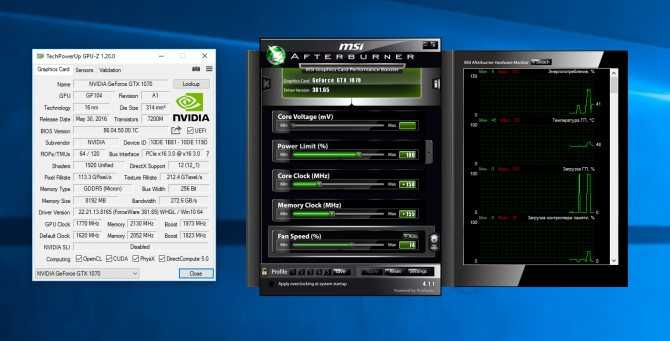
Overall, the interview focuses on the physical limitations we face when it comes to computer technology. It’s no secret that the introduction of new process nodes is getting slower, so making efficient products is getting more and more difficult.
Sam Naffziger mentions that power levels for future products will keep increasing, but AMD has a multi-year plan to improve efficiency. We hope that RDNA 3 won’t end up scaring potential customers with high-power draw GPUs.
RDNA 3 In APUs And Mobile CPUs
RDNA 3 will also be added to future Zen 4 (Phoenix) APUs, which will have performance comparable to an RTX 3060M, according to greymon55.
Phoenix GPU≈3060m 60W
— Greymon55 (@greymon55) May 8, 2022
Supposedly, the RDNA 3 GPU in these APUs can have up to 6 WGPs with 1,536 stream processors. With a high enough clock speed (~3 GHz), it will definitely be the fastest iGPU ever created.
We imagine that future ultra-light laptops might be capable of high-end gaming thanks to AMD’s Ryzen 7000 APUs.
For more specification-related information, check the Specifications Rumors heading.
Architecture
Multiple sources claim that Navi 3 will have a chiplet design or, more specifically, a multi-chip-module (MCM). This is quite a unique style for a GPU, considering that the only such GPU is AMD’s Instinct MI200 SKU.
However, we have seen this same design in AMD’s Ryzen processors. The chiplet design of their processors is their secret formula for the considerable increase in performance and physical cores.
Maybe this secret formula will also work with their RDNA 3 graphics cards.
Here’s a render of the Navi 33 (monolithic) and Navi 32 and 31 MCM dies:
Navi 33, Navi 32, and Navi 31 die leaks – Source: _wildc
Supposedly, the graphics core die on Navi31 is 350mm2, making it around 30% smaller than Navi 21. That results from TSMC’s 5nm process node, AMD’s new chiplet design, and AMD’s decision to remove certain unnecessary parts in the architecture.
That results from TSMC’s 5nm process node, AMD’s new chiplet design, and AMD’s decision to remove certain unnecessary parts in the architecture.
It’s important to note that this kind of architecture comes with various challenges, most notably, latency. Fortunately, AMD uses Infinity Fabric and an active bridge that connects all of the chiplets to reduce latency effectively.
AMD’s active bridge as a solution to reduce latency
Additionally, greymon55 leaked that Infinity Fabric could be 3D stacked for RDNA3. This will double the Infinity Cache up to 512MB (for Navi 31).
3D IFC
— Greymon55 (@greymon55) November 8, 2021
Another exciting addition to RDNA 3 GPUs could be the supposed 3D stacked Accelerator Processor Die or APD.
This offloads tons of work for the primary GPU, allowing it to do regular rasterization while the APD can work on things like ray-tracing.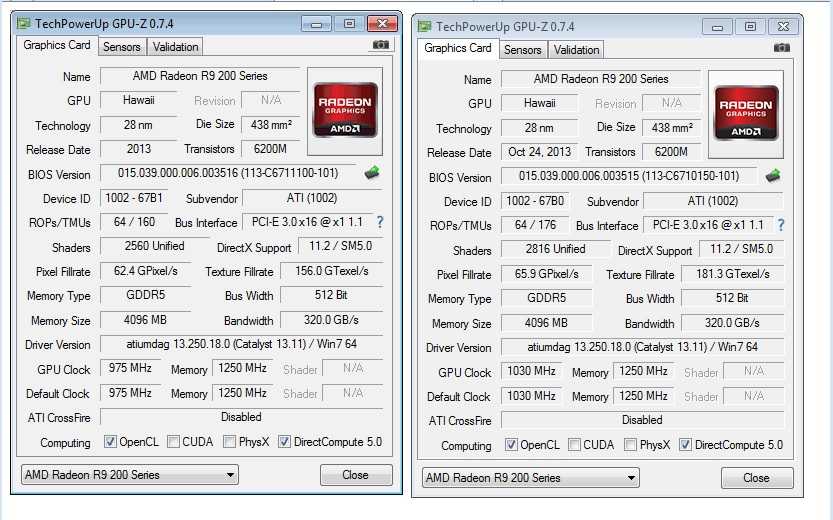 Keep in mind that it is possible that this new technology might not end up on RDNA 3 GPUs.
Keep in mind that it is possible that this new technology might not end up on RDNA 3 GPUs.
Whether these innovations will work in AMD’s (and our) favor, we cannot know for certain, but these kinds of risks are what build a real advantage against the competition.
RedGamingTech explains why this innovation puts the RTX 40 behind RDNA 3 in the video below:
Features
AMD will most probably introduce several new features for that extra bit of performance against NVIDIA (and Intel). Currently, FidelityFX Super Resolution 2.0 is AMD’s strongest feature.
An upscaling technology to compete against proprietary upscaling technology, DLSS.
Radeon Super Resolution is an alternative upscaling option for AMD GPU users.
Additionally, there have been some rumors that AMD has something that will be an answer to Nvidia’s Tensor Cores. Tensor Cores are essential for RTX GPUs as they are the main component that handles the machine learning part of DLSS.
AI accelerate! Should work with FSR3.0 and other features. https://t.co/Wh41UxdoaI
— Greymon55 (@greymon55) June 29, 2022
Greymon55 believes AMD’s answer is AI acceleration cores which will be used for future iterations of FSR. In other words, FSR 3.0 could be proprietary to RX 7000 (similarly to NVIDIA’s DLSS), but it will also mean better upscaling/performance.
Performance Rumors
We’ve seen frequent rumors about all the possible SKUs from RDNA 3 and its architecture, but we haven’t seen much about potential performance increases over Ampere or RDNA 2.
At least we hadn’t until Tom from Moore’s Law Is Dead shared a few RDNA 3 and RDNA 4 whispers.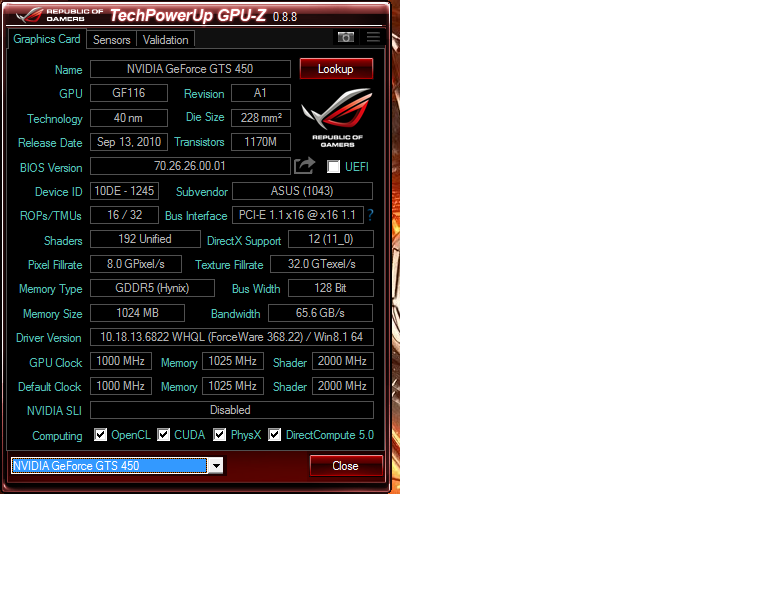
As seen in the image above, Tom expects a 90-130% performance increase from Navi 31 over Navi 21. A bit hopeful, especially after we discovered that RDNA 3 would have less SPs than expected.
However, this new MCM/Ryzen-like chiplet design might actually allow for such huge performance improvements.
Navi 32 will supposedly be at least 20% faster than the RX 6900XT. But Navi 32 SKUs will probably release in early 2023.
We’ll make sure to share any future changes in specifications, prices, or release date with you here!
Where to buy the Nvidia RTX 4090: Specs, price, release date & more
Releasing on October 12, the Nvidia RTX 4090 will be priced at $1599. Wondering where to buy the RTX 4090? We’ve got all the links you need to secure this blazing-fast GPU.
Announced at GTC 2022, the RTX 4090 looks to be the fastest graphics card ever made.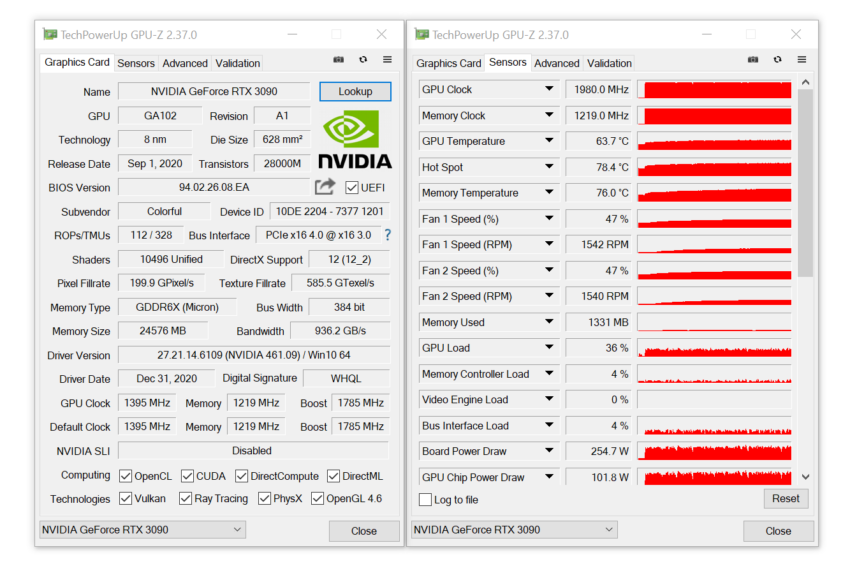 Priced at $1599 and releasing on October 12, you’ll be able to get your hands on this blazing-fast 40-series graphics card very soon.
Priced at $1599 and releasing on October 12, you’ll be able to get your hands on this blazing-fast 40-series graphics card very soon.
After the RTX 4090, will come the RTX 4080, in addition to the RTX 4070, which may release next year, after much speculation over when it might launch.
It’s likely that supply for the 40-series will be fairly healthy, as Nvidia has put up to the tune of $10 billion to secure fabrication over at TSMC.
We’ve also seen retailers begin to list the new GPU up at various retailers, so we’ve assembled a list of where you can grab the 4090 GPU below, though many retailers are not yet taking pre-orders. It’s likely that the products will go live upon their release date.
Where to buy the RTX 4090 in the US
The RTX 4090 will be available at most major retailers in the US, but you shouldn’t expect a cheap price anywhere, as no matter what card you choose, you’ll be paying around $1599. On the higher-end of the AIB cards, especially the ASUS ROG Strix OC’d mode, you could pay up to around $2000 in total.
On the higher-end of the AIB cards, especially the ASUS ROG Strix OC’d mode, you could pay up to around $2000 in total.
| GPU | Retailer |
| Nvidia GeForce RTX 4090 Founders Edition | Best Buy |
| GIGABYTE GeForce RTX 4090 Windforce Gaming OC | Best Buy, B&H |
| GIGABYTE GeForce RTX 4090 Windforce | Best Buy, Newegg, B&H |
| MSI GeForce RTX 4090 Suprim Liquid X | Best Buy, Newegg, B&H |
| MSI GeForce RTX 4090 Suprim X | Newegg, B&H |
| MSI Geforce RTX 4090 Gaming Trio | Best Buy, B&H |
| MSI Geforce RTX 4090 Gaming X Trio | Newegg, B&H |
| PNY GeForce RTX 4090 XLR8 Gaming Verto Epic-X | Best Buy, B&H |
| ASUS GeForce RTX 4090 TUF Gaming OC | Newegg, B&H |
| ASUS GeForce RTX 4090 TUF Gaming | Newegg, B&H |
| ASUS ROG STRIX GeForce RTX 4090 Gaming OC Edition | Newegg, B&H |
When will the RTX 4090 come out?
The RTX 4090 will release October 12. After months of speculation, it seems the rumored October release date was true. The confirmation does however leave the question of what happens to the currently aging stock still in the second-hand and retail market of Nvidia’s 30-series cards, which are now gaining even more popularity.
After months of speculation, it seems the rumored October release date was true. The confirmation does however leave the question of what happens to the currently aging stock still in the second-hand and retail market of Nvidia’s 30-series cards, which are now gaining even more popularity.
With retailers stuck with so much aged stock that it potentially threatens the release window of the rest of Nvidia’s Lovelace next-generation cards.
Due to this oversupply, Nvidia has cut the price of current-generation high-end graphics cards.
How much is the RTX 4090?
The RTX 4090 will be priced at an MSRP of $1599. However, in current listings, you should expect this number to vary from $1599, all the way to around $2000 for the higher-end AIB models from brands such as ASUS.
Despite this, it’s still priced lower than we initially expected, as a Vietnamese retailer listed the new GPU for over $2000.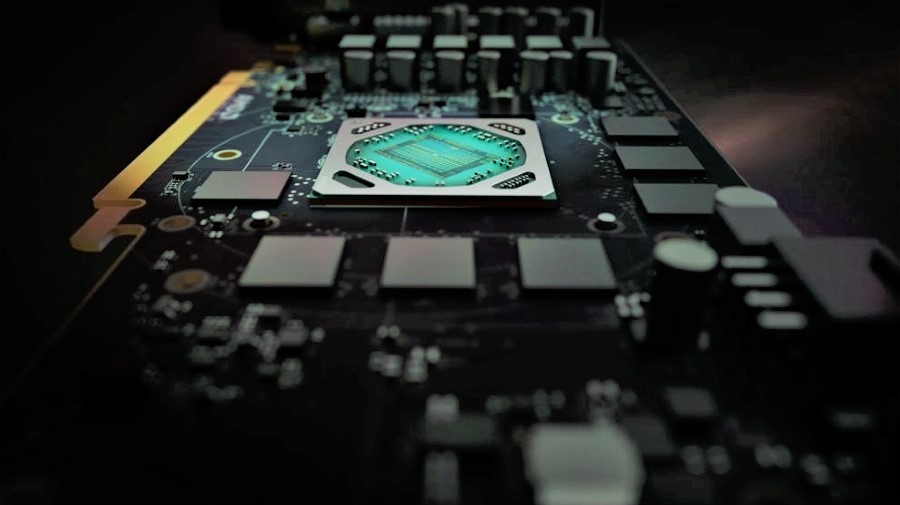 However, it’s thankfully lower. The RTX 4090 also possesses a higher MSRP than the RTX 3090, which was launched at $1499. This bump of $100 is actually fairly good pricing, considering inflation in the subsequent years, too.
However, it’s thankfully lower. The RTX 4090 also possesses a higher MSRP than the RTX 3090, which was launched at $1499. This bump of $100 is actually fairly good pricing, considering inflation in the subsequent years, too.
It’s tough to tell what demand might look like for the RTX 4090, but since it will retain Nvidia’s power crown, and will potentially be one of the best graphics cards in 2022.
However, with the supply chain issues currently ongoing, we fully expect to see the 4090 get its price raised a little further above the intended $1599 MSRP.
How fast is the RTX 4090?
The RTX 4090 manages to boast incredibly impressive specifications on paper, with even more impressive results in gaming scenarios like in Overwatch 2. We’ve listed the full specifications of the 4090 below.
| NVIDIA CUDA® Cores | 16384 |
| Boost Clock (GHz) | 2.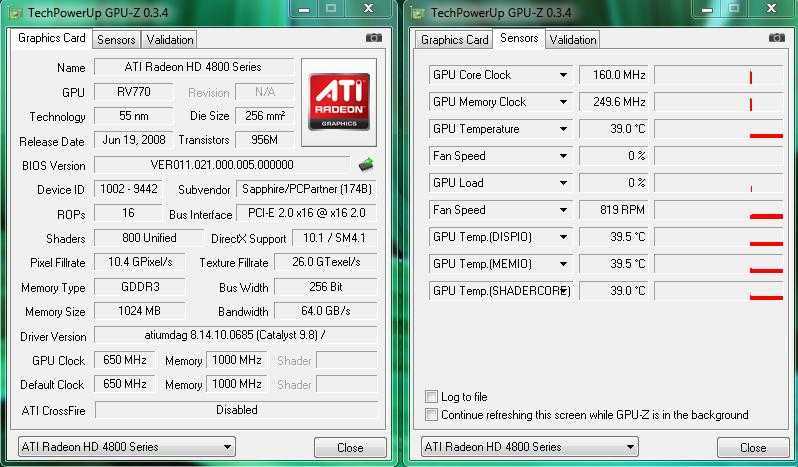 52 52 |
| Base Clock (GHz) | 2.23 |
| Standard Memory Config | 24 GB GDDR6X |
| Memory Interface Width | 384-bit |
| Maximum GPU Temperature (in C) | 90 |
| Graphics Card Power (W) | 450 |
| Required System Power (W) (4) | 850 |
| Required Power Connectors | 3x PCIe 8-pin cables (adapter in box) OR1x 450 W or greater PCIe Gen 5 cable |
| Maximum Digital Resolution (1) | 7680×4320 |
| Standard Display Connectors | HDMI(2), 3x DisplayPort(3) |
| Multi Monitor | 4 |
| HDCP | 2. 3 3 |
| Length | 304 mm |
| Width | 137 mm |
| Slot | 3-Slot (61mm) |
According to Nvidia’s own benchmarks, the GPU can produce the following results compared against a system using an i9-12900k, equipped with a 3090 Ti with 32GB of RAM.
- 2x the performance in Microsoft Flight Simulator
- 2x the performance in Warhammer 40K: Darktide
- Over 4x the performance in Cyberpunk 2077
Nvidia released further information on performance that you can expect out of Overwatch 2 using the GPU, we’ve listed their results below.
Configuration: Intel i9-12900k, 1440p, Ultra Setttings
| GPU | FPS |
| RTX 4090 | 507 FPS |
| RTX 4080 16GB | 368 FPS |
| RTX 4080 12GB | 296 FPS |
| RTX 3080 | 249 FPS |
| RTX 3070 | 195 FPS |
| RTX 3060 | 122 FPS |
In leaked benchmarks, this behemoth of a GPU managed to perform 82% better than the RTX 3090 in Time Spy Extreme, according to Kopite7Kimi.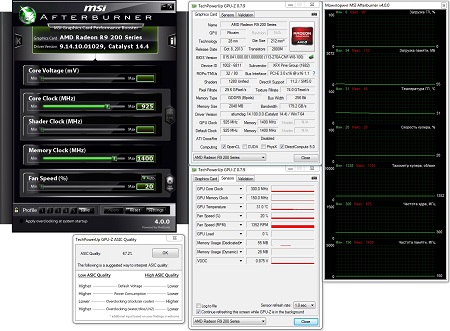 This is extremely promising for Nvidia’s upcoming GPU, and we believe that it will absolutely trample all over current consumer graphics cards available today.
This is extremely promising for Nvidia’s upcoming GPU, and we believe that it will absolutely trample all over current consumer graphics cards available today.
In gaming workloads, leaked benchmarks suggest that the 4090 performs exceptionally. Leaker XpeaGPU revealed that the card managed to run Control at 4K, with Ray Tracing and DLSS on at a blisteringly fast 160FPS.
No small feat for a game that is notorious for bringing many GPUs to their knees with how heavy it can run. Though, remember that these are leaked benchmarks, are by no means official, and can change compared to the final product.
Where will the RTX 4090 be expected to be on sale?
The RTX 4090 will be available at all good electronics retailers. We’ve seen many of them already go live, and have listed where you can buy these upcoming GPUs earlier in this article.
It’s likely that we will see more AIB cards hit the market after the initial launch, from the likes of companies like PALIT and more. However, these are likely to come some weeks after launch, possibly due to logistical reasons.
It will not be the fastest 40-series GPU
The RTX 4090 will not be the fastest Lovelace-based GPU that Nvidia will release, it is going to use a cut-down version of the AD102, the best chip.
Nvidia will also be saving the full-fat version later down the line. The reason why companies usually start on the highest-end of cards is that they are able to then do something named “chip binning”.
So, if a chip is made and doesn’t quite cut the mustard to become 4090, then it might be put into a pile for use later in life as an RTX 4080 Ti later down the line.
If you click on a product link on this page we may earn a small affiliate commission.
fairly valued leader in the field of graphics processors — Finam.Ru
Investment idea
NVIDIA is the world’s largest developer of graphics accelerators and processors. The company’s chip-based platforms are used in a wide range of industries, from PC gaming to cloud services and autopilot.
We have a Hold recommendation for NVIDIA stock with a January 31, 2022 target price of $685, implying 7.6% upside potential.
- NVIDIA’s financial results for the past year have been strong. The company managed to significantly improve all key financial indicators due to the good results of the gaming division and the division for data centers.
- Increasing game realism and graphics performance requirements will help keep NVIDIA’s gaming GPUs in high demand in the future.
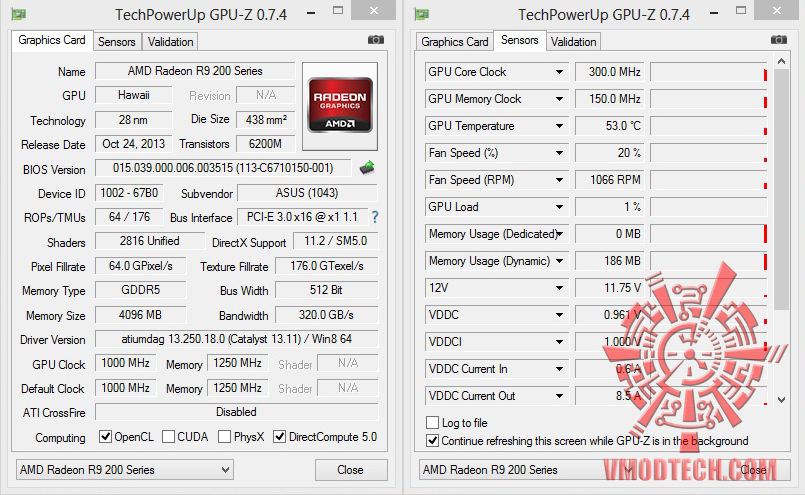 This trend should be supported by the spread of high-resolution displays.
This trend should be supported by the spread of high-resolution displays. - We also expect NVIDIA to continue to strengthen its position in areas such as artificial intelligence, deep learning, supercomputing and data centers. Good prospects in the long term are associated with the expansion of the use of NVIDIA chips in the automotive industry.
- Meanwhile, these factors, in our opinion, are already largely priced into NVIDIA shares, and their upside potential looks limited.
Issuer’s description
NVIDIA is the largest US semiconductor company by capitalization. The main products are graphics processing units (GPUs) represented by the mainstream GeForce line, Quadro professional graphics cards and Tesla computing accelerators, and the Tegra system-on-a-chip family. The company’s target markets are the gaming industry, professional visualization, automotive and high performance computing. An important focus for the company is the artificial intelligence market. NVIDIA works according to the so-called fabless model, that is, it is engaged in the development and marketing of products, but does not have its own production of semiconductor wafers and microcircuits. The company orders the production of chips and the assembly of finished products and systems from third-party manufacturers, such as Taiwan Semiconductor Manufacturing Company (TSMC), Samsung Electronics, Amkor Technology, Hon Hai Precision Industry, etc.
NVIDIA works according to the so-called fabless model, that is, it is engaged in the development and marketing of products, but does not have its own production of semiconductor wafers and microcircuits. The company orders the production of chips and the assembly of finished products and systems from third-party manufacturers, such as Taiwan Semiconductor Manufacturing Company (TSMC), Samsung Electronics, Amkor Technology, Hon Hai Precision Industry, etc.
NVDIA’s principal shareholders are Vanguard (7.75%), Fidelity Management & Research (6.92%), BlackRock Institutional Trust (4.72%), State Street Global Advisors (3.99%) and T. Rowe Price Associates (1.7%). Capitalization of the company — about $ 395 billion.
Gaming segment
Founded in 1993 NVIDIA is actually the inventor of the graphics accelerator, which brought graphics in computer games to a whole new level. NVIDIA is currently the undisputed leader in the PC gaming video adapter market, where its GeForce series processors account for over 70% of the market. At the same time, in addition to PCs, NVIDIA graphics chips are installed in Microsoft Xbox and Nintendo Switch game consoles.
At the same time, in addition to PCs, NVIDIA graphics chips are installed in Microsoft Xbox and Nintendo Switch game consoles.
In the meantime, Quadro workstations are the industry standard for professionals running 2D and 3D applications on high performance workstations. NVIDIA’s main competitor in the GPU segment for many years has been another American company, Advanced Micro Devices (AMD), which is far behind in second place.
Note that, in addition to continuously improving the performance of its graphics chips, NVIDIA pays great attention to their quality improvement, introducing new technologies, including those based on artificial intelligence (AI), designed to further improve computer graphics. So, in 2018, the company implemented hardware support for real-time ray tracing (NVIDIA RTX) in its GPUs, which became one of the most important steps in computer graphics in recent years. The possibilities of this technology open up many algorithms that allow you to achieve photorealistic images. To date, more than 30 games have supported RTX technology, including CD Projekt Red’s hit Cyberpunk 2077, released in late 2020, and super-popular games such as Fortnite, World of Warcraft, and Minecraft. Moreover, RTX technology finds application not only in computer games, but also in many areas of professional graphics. In particular, its support appeared in such products as Maya 2020 from Autodesk, Catia 2020 from Dassault, Ray-Trace Studio from Siemens.
To date, more than 30 games have supported RTX technology, including CD Projekt Red’s hit Cyberpunk 2077, released in late 2020, and super-popular games such as Fortnite, World of Warcraft, and Minecraft. Moreover, RTX technology finds application not only in computer games, but also in many areas of professional graphics. In particular, its support appeared in such products as Maya 2020 from Autodesk, Catia 2020 from Dassault, Ray-Trace Studio from Siemens.
Last November, NVIDIA introduced the new GeForce RTX 30 family of graphics accelerators, which is a big leap for the industry and makes RTX technology more accessible. The key advantages of the new chips are the implementation of the new Ampere architecture with updated RT cores and tensor cores, the transition to an 8-nanometer process technology and the use of the world’s fastest GDDR6X memory. GeForce RTX 30 processors significantly outperform the previous generation based on the Turing architecture in terms of performance and power efficiency; in addition, they have further developed AI-based software technologies designed to make the gaming experience smoother and more comfortable.
Source: company data
For example, NVIDIA DLSS (deep learning anti-aliasing) technology improves graphics performance and quality through the use of dedicated tensor cores in GeForce RTX graphics cards, while NVIDIA Reflex technology reduces game control lag for better response games on the actions of the player. In addition, the company has released the NVIDIA Broadcast program, designed to facilitate the streaming process. It introduces a set of three AI-powered tools, including denoising with RTX Voice intelligent noise reduction, removing and overlaying any background in broadcasts, and auto-framing with automatic camera aiming and focusing when the head is tilted. Users can use these tools, for example, in chats, Skype calls or video conferences.
After the release of video cards based on GeForce RTX 30 processors, they immediately began to be in high demand in the world. At the same time, cryptocurrency miners have become an additional source of demand, since, thanks to the large computing power of the GPU, companies are well suited for the process of mining this new type of money. NVIDIA also announced that, to date, its partners have introduced more than 70 laptop and desktop models that use GeForce RTX 30-based graphics cards.
NVIDIA also announced that, to date, its partners have introduced more than 70 laptop and desktop models that use GeForce RTX 30-based graphics cards.
relatively weak computers play almost all modern video games through a regular Internet browser. The service currently supports over 800 games from 300 different publishers and has over 6 million subscribers.
Data Center Segment
Meanwhile, fast-growing areas such as artificial intelligence, deep learning, supercomputing, data centers, where the use of GPUs is becoming more common, are becoming increasingly important for NVIDIA’s business. This is because GPU-based solutions in these areas are often many times more efficient than x86 CPU-based solutions.
Last year, NVIDIA released the Tesla A100 compute accelerator based on the new Ampere architecture, which is currently in huge demand in the market. Thus, almost all leading server manufacturers, including Cisco, Dell, Hewlett Packard Enterprise, and Lenovo, have already presented their systems based on this chip.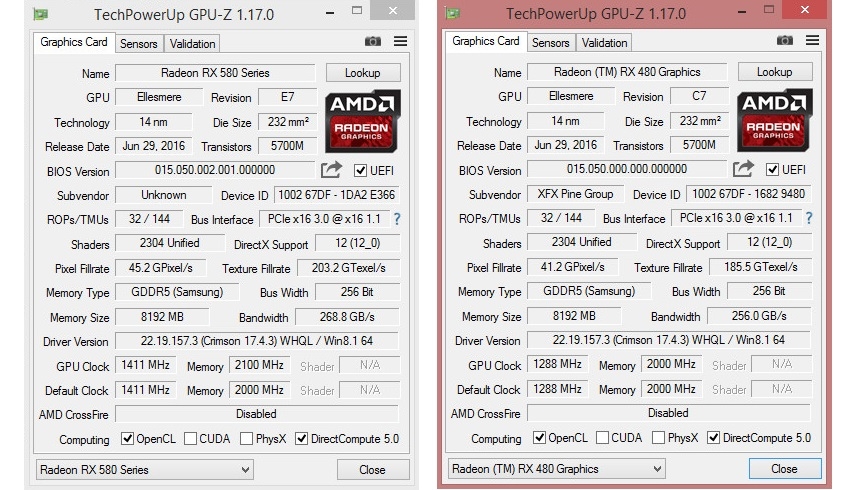 Cloud giants such as Microsoft, Google, Amazon, Facebook, Alibaba, Baidu, Tencent announced the use of A100 in their cloud computing platforms.
Cloud giants such as Microsoft, Google, Amazon, Facebook, Alibaba, Baidu, Tencent announced the use of A100 in their cloud computing platforms.
NVIDIA GPU-powered AI computing is used in virtually every industry, from retail and energy to healthcare and finance. In addition, NVIDIA chips are currently used in 346 of the world’s top 500 supercomputers. Including the company’s own supercomputer, Selene, ranks fifth in the ranking. Meanwhile, NVIDIA also has the smallest AI «supercomputers» in the world — bank card-sized single-board Jetson systems based on the Tegra SoC. These microcomputers offer high performance for their size and are ideal for robots and embedded AI systems, including medical devices, smart cameras, high-resolution sensors, automated optical inspection systems, small scale manufacturing, and more.
To strengthen its position in the data center segment, NVIDIA made a major acquisition last year with a $6.9 billion acquisition of US-Israeli firm Mellanox Technologies, a maker of high-speed switched computer networking equipment. Mellanox is the world’s leading provider of end-to-end server and storage switching solutions that optimize data center performance. In particular, the company is widely known as a developer of InfinitiBand and Ethernet switches and network adapters, which are actively used in supercomputers. Using its solutions in the NVIDIA computing platform allows the latter to better respond to the growing adoption of high-performance computing systems in the field of artificial intelligence, scientific computing and data analysis. Prior to this, NVIDIA and Mellanox already had experience of working together — they participated together in a project to create supercomputers for the US Department of Energy.
Mellanox is the world’s leading provider of end-to-end server and storage switching solutions that optimize data center performance. In particular, the company is widely known as a developer of InfinitiBand and Ethernet switches and network adapters, which are actively used in supercomputers. Using its solutions in the NVIDIA computing platform allows the latter to better respond to the growing adoption of high-performance computing systems in the field of artificial intelligence, scientific computing and data analysis. Prior to this, NVIDIA and Mellanox already had experience of working together — they participated together in a project to create supercomputers for the US Department of Energy.
Note that in April of this year, NVIDIA introduced Grace, its first server processor for data centers. The processor is designed on the ARM architecture for fast processing of large amounts of data and is aimed at using artificial intelligence models during training. According to the company itself, in the tasks of ultra-complex computing, its chip will be 10 times more productive than the most advanced competitor chips that are on the market today.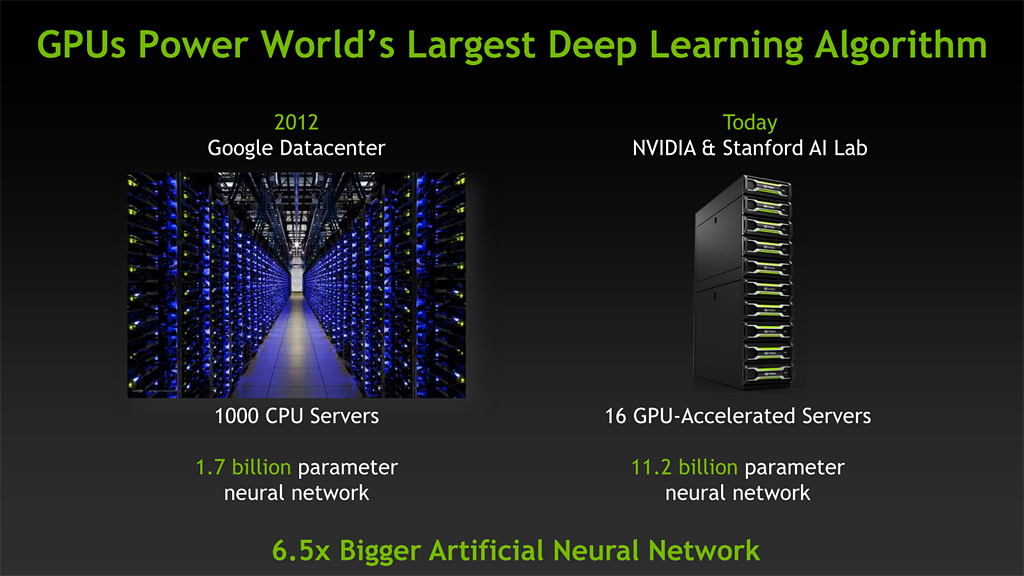 If the technical characteristics of the new microprocessor are confirmed, then NVIDIA will be able to impose direct competition on the server processor market from another American company, Intel.
If the technical characteristics of the new microprocessor are confirmed, then NVIDIA will be able to impose direct competition on the server processor market from another American company, Intel.
Grace is expected to hit the market in 2023. Los Alamos National Laboratory of the US Department of Energy and the Swiss National Supercomputing Center have already announced their intention to build supercomputers based on it.
Automotive
NVIDIA also has significant prospects in the automotive sector. NVIDIA solutions in the field of infotainment and navigation systems, digital dashboards and advanced driver assistance systems, built on the basis of the Tegra processor, are already used by the world’s leading automotive concerns, including Audi, Mercedes-Benz, Tesla, BMW, Honda and others. Automakers are increasingly choosing the DRIVE platform as their computing system for autonomous vehicles. In particular, NVIDIA has contracts for the development and implementation of autopilot technologies with companies such as Uber, Volkswagen, Volvo, Aurora, Baidu, Daimler, Bosch, Continental and ZF Friedrichshafen.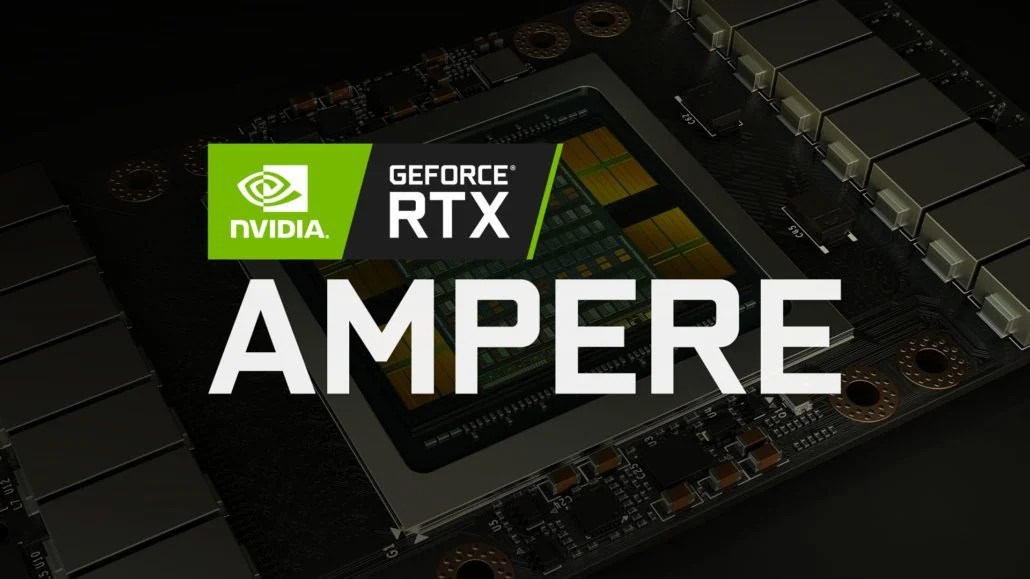 And earlier it became known that NVIDIA will cooperate with the Toyota Research Institute-Advanced Development, a division of the auto giant Toyota, specializing in the development of unmanned vehicles. In total, according to NVIDIA itself, «more than 370 companies and organizations in the world» use its DRIVE platform to one degree or another.
And earlier it became known that NVIDIA will cooperate with the Toyota Research Institute-Advanced Development, a division of the auto giant Toyota, specializing in the development of unmanned vehicles. In total, according to NVIDIA itself, «more than 370 companies and organizations in the world» use its DRIVE platform to one degree or another.
Note that for autonomous vehicle manufacturers, NVIDIA offers DRIVE Sim, a scalable cloud platform for physically accurate simulation of various scenarios related to autopilot. With DRIVE Sim, autonomous vehicle developers can increase test productivity, efficiency, and test variety, speeding time to market and minimizing the need for real-world driving. DRIVE Sim is built on NVIDIA Omniverse (an open platform for creating virtual environments and physically based real-time simulation), lets you simulate any driving situation, including unlikely scenarios and extreme weather conditions, and run millions of tests a day without risk to other road users.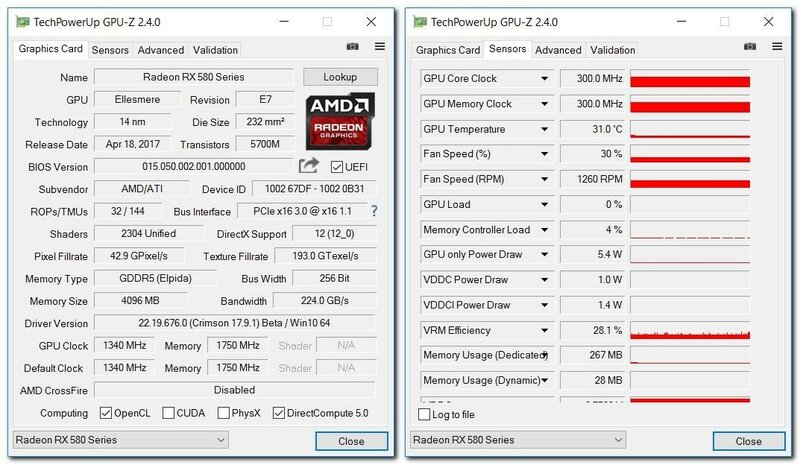 movement.
movement.
The gaming segment currently accounts for almost half (47%) of NVIDIA’s annual revenue. At the same time, data center segment revenues have shown outpacing growth in recent years, averaging 82% per year over the past five years. As a result, their share of total revenue soared to 40% from just 7% five years ago.
Source: Company data
Arm Holdings deal
21.5 billion in NVIDIA stock and $12 billion in cash, of which $2 billion will be paid at the time of the transaction. In addition, SoftBank Group could receive up to $5 billion more depending on Arm’s future results, and Arm employees will receive $1.5 billion worth of US company shares. The deal will see the Japanese company own 6.7-8.1% of NVIDIA shares. .
It should be said that SoftBank Group acquired Arm in 2016 for $31.4 billion. And if NVIDIA’s Arm resale deal goes through, it will be the largest in the semiconductor industry.
Arm is a developer of microprocessors, and its ARM technology is at the heart of the chips used in most smartphones manufactured worldwide, as well as in a huge number of other gadgets and consumer electronics. Moreover, ARM technology is beginning to gradually penetrate the data center and network equipment market. Considering how much attention NVIDIA has been paying to the data center market lately, its interest in buying Arm is quite logical — the deal will significantly strengthen its position as the world’s leading chipmaker.
Moreover, ARM technology is beginning to gradually penetrate the data center and network equipment market. Considering how much attention NVIDIA has been paying to the data center market lately, its interest in buying Arm is quite logical — the deal will significantly strengthen its position as the world’s leading chipmaker.
In the meantime, the parties will still need to obtain regulatory approvals from the UK, China, the EU and the US in order to complete the transaction, which can be very difficult. In particular, given the current very tense relations between the United States and China, the authorities of the Celestial Empire may well begin to obstruct the deal, demanding concessions from the Americans, who continue to put pressure on Chinese technology companies.
However, in the US itself, NVIDIA may encounter difficulties. The fact is that ARM technologies are licensed by many other technology giants, such as Apple, Intel, AMD, Qualcomm. And while NVIDIA has said that Arm will continue to use its licensing model while maintaining «neutrality» with customers, other companies are likely to object to the deal and demand assurances that the new owner will continue to provide everyone with equal access to ARM technology.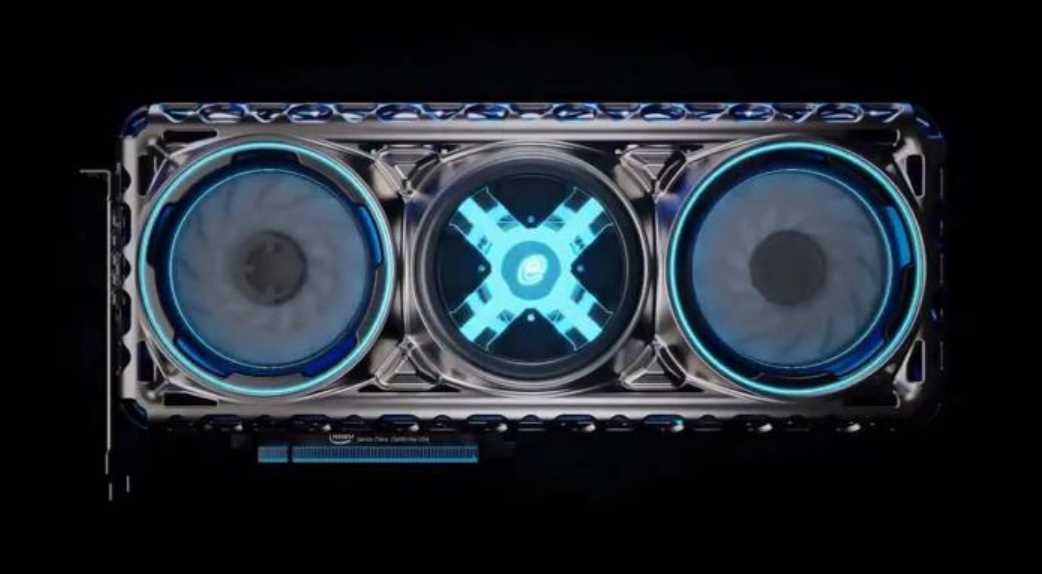
Financial results
NVIDIA has successfully navigated the 2020 crisis, becoming one of the main beneficiaries of the profound changes that the coronavirus pandemic and the response to it have brought to the lives of consumers and businesses. After the introduction of hard lockdowns in most countries in the world, the demand for home entertainment such as computer games has increased dramatically, which has led to an increase in sales of graphics accelerators. In addition, due to the massive transition of companies to remote work, the demand for components for data centers has increased significantly. Against this background, the company’s revenue and profit showed impressive growth and set new historical highs.
In particular, in the fourth quarter of fiscal year 2021 ended January 31, NVIDIA’s revenue increased by 61.1% year-on-year to a record $5 billion and beat the consensus forecast of $4.82 billion. gaming GPUs rose 67.3% to $2.5 billion, driven by a surge in demand for GeForceRTX 30 family graphics accelerators and game console processors.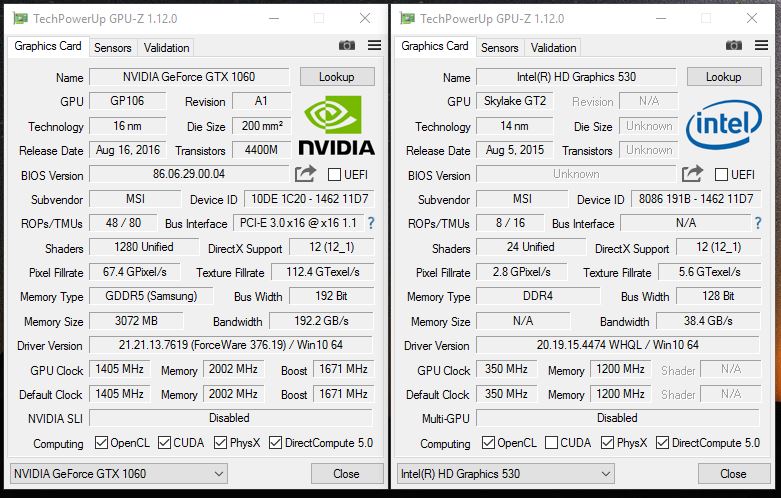 At the same time, sales in the data center solutions segment soared 96.6% to $1.9 billion amid strong demand from hyperscale cloud service providers that use the company’s processors for their data centers. Mellanox, which NVIDIA closed its takeover deal in April last year, accounted for 10% of revenue in this segment. Meanwhile, the demand for professional graphics adapters began to return relatively recently, so the company’s corresponding line of business recorded a decline in sales by 7.3%, to $307 million. In quarterly terms, growth of 16% was recorded, which is due to a gradual improvement in the situation in the sector. Adjusted EBITDA jumped by 79.2% to $2.38 billion, while adjusted earnings per share rose 64% to $3.10, well ahead of Wall Street’s average estimate of $2.81.
At the same time, sales in the data center solutions segment soared 96.6% to $1.9 billion amid strong demand from hyperscale cloud service providers that use the company’s processors for their data centers. Mellanox, which NVIDIA closed its takeover deal in April last year, accounted for 10% of revenue in this segment. Meanwhile, the demand for professional graphics adapters began to return relatively recently, so the company’s corresponding line of business recorded a decline in sales by 7.3%, to $307 million. In quarterly terms, growth of 16% was recorded, which is due to a gradual improvement in the situation in the sector. Adjusted EBITDA jumped by 79.2% to $2.38 billion, while adjusted earnings per share rose 64% to $3.10, well ahead of Wall Street’s average estimate of $2.81.
At the end of the entire fiscal year 2021, the figures also look very impressive.
NVIDIA IV Q4 and FY 2021 Highlights ($m)
Source: Company data
NVIDIA balance sheet remains strong. The company ended the 4th financial quarter with $11.56 billion of cash and short-term investments in its accounts, with a total debt of $6.96 billion. In the reporting period, the company generated operating cash flow of $2.07 billion (up 41.1% yoy), allocated $283 million for investments and returned $99 million to shareholders through dividends.
The company ended the 4th financial quarter with $11.56 billion of cash and short-term investments in its accounts, with a total debt of $6.96 billion. In the reporting period, the company generated operating cash flow of $2.07 billion (up 41.1% yoy), allocated $283 million for investments and returned $99 million to shareholders through dividends.
NVIDIA also released a very optimistic guidance for the first quarter of fiscal year 2022 ending in April and expects revenue of $5.30 billion plus/minus 2%. The company forecasts quarterly capex of $300-325 million and an income tax rate of 10% plus/minus 1%.
During a press conference following NVIDIA’s earnings report, Colette Kress, the company’s CFO, estimated the contribution of cryptocurrency miners to FQ4 revenue at $100-300 million. At the same time, she stated that the company is concerned that high demand from miners reduces availability graphics cards based on NVIDIA GPUs for general users. In this regard, the company will programmatically limit the performance of gaming graphics cards of the GeForce RTX 3060 series, the most popular among gamers, in cryptocurrency mining. For «professional» miners, NVIDIA recently introduced specialized accelerators from the CMP family, sales of which are expected to bring the company $ 150 million in revenue this quarter.
For «professional» miners, NVIDIA recently introduced specialized accelerators from the CMP family, sales of which are expected to bring the company $ 150 million in revenue this quarter.
Shareholder payouts
NVIDIA has not been known for high shareholder payouts in recent years, preferring to direct available funds to business development and M&A deals. The size of the company’s dividends has practically not grown since 2018, while the dividend yield on shares is a symbolic 0.11%.
Source: company data, FINAM forecast
NVIDIA currently has an approved $7.24 billion share buyback program valid until December 2022. However, given that NVIDIA will major deal to take over Arm Holdings, no significant increase in payments to shareholders is expected, apparently.
Growth Outlook
We remain positive on NVIDIA’s future outlook, with the gaming GPU segment likely to remain the main source of revenue in the coming quarters. The number of gamers in the world is constantly growing and currently stands at about 3.1 billion At the same time, computer games are becoming more complex and demanding on the performance of graphics accelerators every year, and against this background, the demand for the company’s solutions in this area, we believe, will continue increase. This trend should be supported by the further distribution of displays with 4K resolutions and higher, which are becoming more accessible to ordinary users.
The number of gamers in the world is constantly growing and currently stands at about 3.1 billion At the same time, computer games are becoming more complex and demanding on the performance of graphics accelerators every year, and against this background, the demand for the company’s solutions in this area, we believe, will continue increase. This trend should be supported by the further distribution of displays with 4K resolutions and higher, which are becoming more accessible to ordinary users.
What’s more, according to NVIDIA, only 15% of GeForce GPU-based video adapters already installed in players’ computers are now the latest generations that support RTX and other modern technologies. With these technologies becoming more prevalent in large gaming projects, NVIDIA is anticipating a global graphics card upgrade cycle that will fuel demand for the company’s gaming chips.
In addition, virtual/augmented reality devices, which in recent years, albeit slowly but surely, make their way to the market, can become an additional source of demand for GPUs.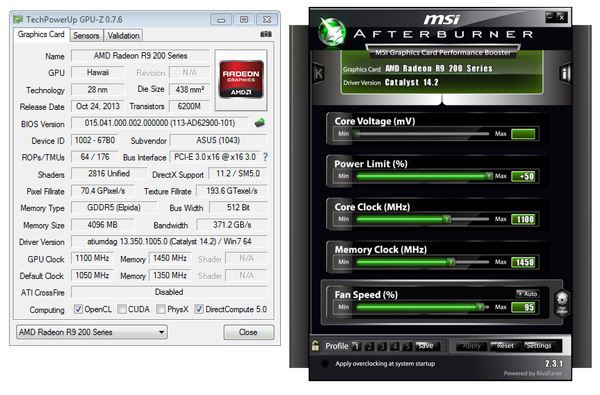
In the meantime, the main driver of NVIDIA’s financial performance in the medium term is likely to remain the data center market, which is expected to continue to grow at a rapid pace due to the growing demand for cloud computing and processing of large amounts of data amid the rapid adoption of the 5G communication standard and the Internet of things. According to the forecast of the analytical portal Technavio, the overall market for data center solutions, including hardware, software and various services, will grow by 18.3% this year. At the same time, its average annual growth rate in the period 2020–2025 is estimated at 21%, and in absolute terms, the increase over 5 years will be $ 519.3 billion, of which 35% will be in North America. In turn, the research firm IDC expects that the demand for AI computing systems, which focuses on NVIDIA, will increase to $ 110 billion in 2024 from $ 50.1 billion in 2020, which corresponds to the average annual growth rate in the next four years.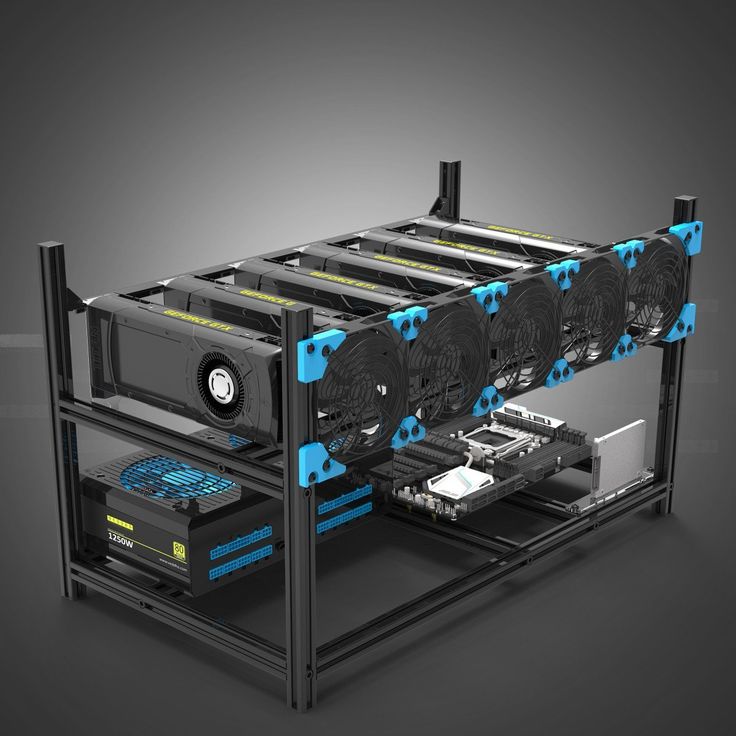 at the level of 20.1%.
at the level of 20.1%.
Source: technavio.com
Another potential medium-term growth target should be the autonomous vehicle segment. While the unmanned technology market is actually in its infancy, there is no doubt that it has a great future. Almost all international IT corporations and auto giants have already presented prototypes of self-driving cars to the world, and the legislation of some countries has already adapted to the appearance of drones on public roads.
Forecasts for the development of the autonomous car market fluctuate quite a lot, but they suggest its growth by tens of percent per year in the next decade. In particular, according to the forecast of the analytical agency Berg Insight, which looks very conservative, the number of registered autonomous vehicles in the world will grow from 0.2 million in 2020 to 24 million in 2030. At the same time, the total number of unmanned vehicles in active operation at the end 2030 will be 71 million.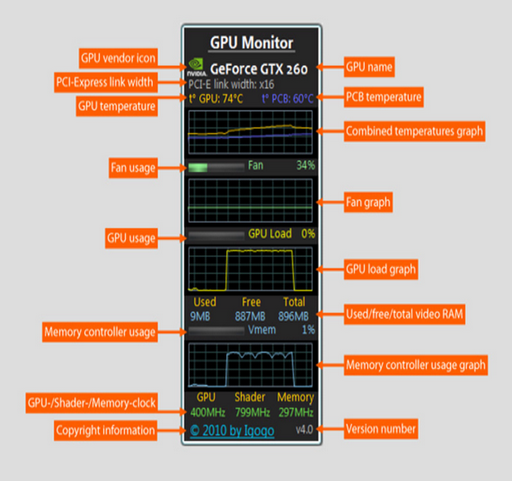 In this case, we are talking about cars with a degree of autonomy SAE Level 3 and Level 4, that is, fully autonomous cars in which a person can take control only in an emergency or is completely deprived of this opportunity.
In this case, we are talking about cars with a degree of autonomy SAE Level 3 and Level 4, that is, fully autonomous cars in which a person can take control only in an emergency or is completely deprived of this opportunity.
Source: Berg Insight. automotive players, we expect NVIDIA to be able to take a strong position in this very promising market.
Below is our projection of NVIDIA’s key financials for the coming years.
Source: company data, FINAM estimates
Valuation
We value NVIDIA using the discounted cash flow (DCF) method. We forecast the company’s free cash flows until the financial year 2027, and calculate the company’s value in the post-forecast period using the multiplier method, using the historical EV/EBITDA ratio. As a target level of EV/EBITDA, we take the median value of the indicator for the last 5 years, which, according to Thomson Reuters, is 29,4x. When calculating the weighted average cost of capital (WACC), we used the following parameters: risk-free rate — 2. 5%, risk premium when investing in shares — 6%, beta coefficient — 1.00, Debt/Equity ratio — 0.02, cost of debt — 4.11%, income tax rate — 10%.
5%, risk premium when investing in shares — 6%, beta coefficient — 1.00, Debt/Equity ratio — 0.02, cost of debt — 4.11%, income tax rate — 10%.
Our estimate of NVIDIA’s fair value as of January 31, 2022 is $424.7 billion, or $685.0 per common share. Upside potential is 7.6%, recommendation — «Hold».
NVIDIA : Calculation of free cash flow, financial years (million $)
Source: Calculations of GC Finams
Source: Calculations of GC Finams
Source: Calculations of the Finams 9000
22 Based on a sample of analysts with at least average historical forecast performance for this stock, the weighted average target price for NVIDIA stock is $676.4 (up 4.9%), according to our calculations, and the stock rating is 3.1 (rating value of 5.0 corresponds to the recommendation Strong Buy, and 1.0 — Strong Sell).
Including Credit Suisse’s target price for NVIDIA shares of $700 (Overmarket), Evercore ISI $675 (Overmarket), Wells Fargo Securities — $715 (Overmarket), Rosenblatt Securities — $800 («Buy»), Oppenheimer — $700 («Overmarket»), Wedbush Securities — $640 («Overmarket»).
Comparative ratios
Based on 2021 EV/EBITDA and P/E valuations, NVIDIA shares look substantial, more than twice as expensive as their peers. In our opinion, such a high premium on financial multiples is not justified, even given the company’s leading position in the GPU market, its high profitability and return on equity, as well as good growth prospects.
Comparative ratios
Source: Thomson Reuters, FINAM calculations
Shares on the stock market
to the stocks of technology companies last year, whose business as a whole fared well in the conditions of the «coronacrisis». In addition, NVIDIA’s stock has outperformed the Philadelphia Semiconductor Index in recent weeks, supported by improved financial guidance for NVIDIA.
Source: Thomson Reuters
Technical picture
From the technical point of view on the weekly chart, NVIDIA shares have reached the upper limit of the medium-term ascending channel.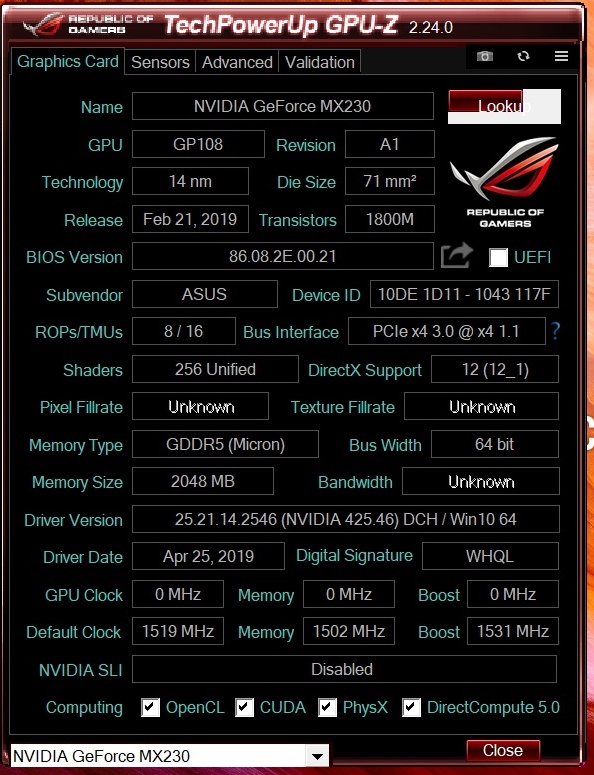 We expect the formation of a corrective movement to the lower border of the figure, in the area of $ 500-525.
We expect the formation of a corrective movement to the lower border of the figure, in the area of $ 500-525.
Source: www.finam.ru
Download file as a review0001
Platforms:
PS5
PS4
Categories:
Interesting
Tags:
Sony
PlayStation 4
PlayStation 5
PlayStation
Herman Hulst
God of War: Ragnarok
hulst
Source
- Comments
- Forum
Sony Interactive Entertainment may continue to release their games on the PlayStation 4 even after the release of God of War Ragnarok . The platformer considers cross-platform releases to be an effective and useful tactic, so the issue of releasing new products on two generations of PlayStation consoles will be considered on a case-by-case basis . Some projects will be cross-gen, others will be full-fledged exclusives PlayStation 5 .
The platformer considers cross-platform releases to be an effective and useful tactic, so the issue of releasing new products on two generations of PlayStation consoles will be considered on a case-by-case basis . Some projects will be cross-gen, others will be full-fledged exclusives PlayStation 5 .
The situation was commented by the head of PlayStation Studios Herman Hulst .
«We definitely don’t want to forget about the millions of players who actively play PlayStation 4, so we also plan to release great new games for this group of players. However, all upcoming releases will be considered on a case-by-case basis,» said Herman Hulst.
Yes, only God of War Ragnarok, which is set to release on November 9, , has been announced for the two consoles at the moment. At the same time, the line of exclusives for 2023 has not yet been fully announced — we do not know what Sony is preparing.
At the same time, the line of exclusives for 2023 has not yet been fully announced — we do not know what Sony is preparing.
Third-party developers are also in no hurry to part with the old console. For example, Capcom recently confirmed a remake of Resident Evil 4 for PlayStation 4 .
Read also: The main character of Bayonetta 3 is voiced by a new actress — she was the voice of Shepard in Mass Effect .
Subscribe to our Telegram channel, where we publish what does not fall into the news feed, and follow us online:
Telegram channel
Google News
Yandex
News
Yandex Zen
Latest news
-
06.
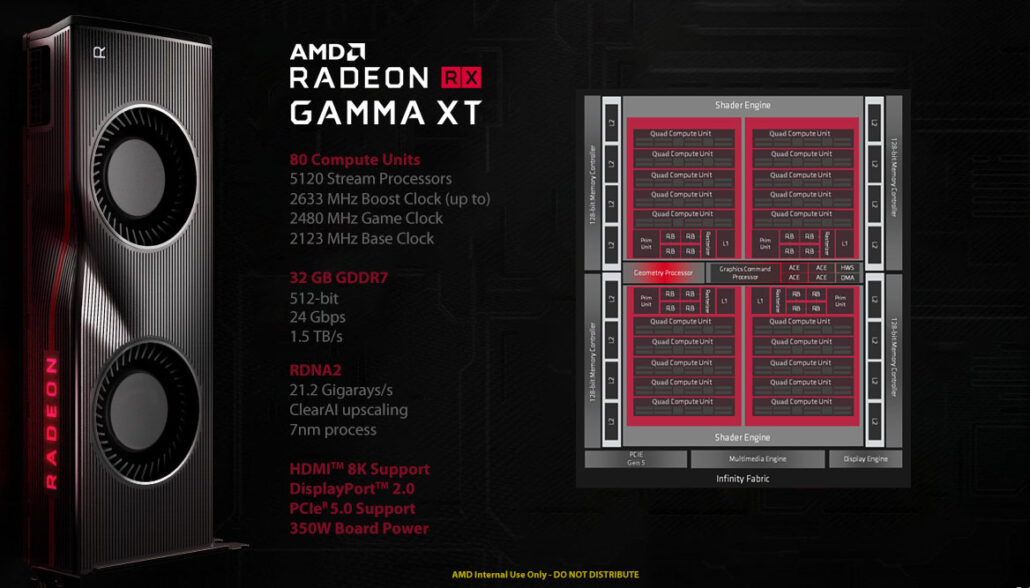 10.2022
10.2022
The European Union imposed a ban on the maintenance of crypto-wallets of Russians -
06.10.2022
Ubisoft releases Far Cry 6 GOTY edition for $120 -
06.10.2022
Leak: First look at Princess Peach from Super Mario Bros. -
06.10.2022
Captain Price and crew enter the war on terror in Call of Duty: Modern Warfare II shooter release trailer -
06.
 10.2022
10.2022
First PlayStation, later PC: Sony explains its strategy for releasing exclusives on consoles and computers -
06.10.2022
Gameplay Features in Latest A Plague Tale: Requiem Video Coming Directly to Xbox Game Pass
Vanguard
Emma Young
October 6, 2022
Autonomous Delivery Vehicle Market Growth Statistics in 2022 Industry Size, Share, Demand Status, Product Portfolio, Segmentation, Forecast to 20282022-10-06T21:57:00+00:00
Global Autonomous Delivery Vehicle Market Report provides a comprehensive analysis that offers comprehensive research with insightful data. This report evaluates various integral elements such as current market trends, upcoming…
This report evaluates various integral elements such as current market trends, upcoming…
Continue Reading
Emma Young
October 6, 2022
Automotive Market 2022 Industry Trends by Top Companies, Global Industry Demand Status, Emerging Technology, Growth Rate, Analysis and Forecast to 20262022-10-06T21:56:00+00:00
The Global Automotive Market Research Report presents the historical , current and future situation in the industry. The report gives insight into size and share, revenue and supply-demand scenarios. In addition, the report includes…
Continue Reading
Emma Young
October 6, 2022
Tequila Market 2022 Future Market Size, Industry Share, Scenario Scale, Top Producers, Key Factors, Industry Segmentation Forecast to 2026 and the future of the industry. The report gives insight into size and share, revenue and supply-demand scenarios. In addition, the report includes…
Continue Reading
Emma Young
October 6, 2022
2022 Global ANSI Barren Centrifugal Pumps Market Share, Growth Rate, Growth Trends, New Trends, Impact of COVID-19, Forecast to 20282022-10-06T21:54:00+00:00
Global Market Report ANSI Barren Centrifugal Pumps provides a comprehensive analysis that offers comprehensive research with insightful data. This report evaluates various integral elements such as current market trends,…
This report evaluates various integral elements such as current market trends,…
Continue Reading
Emma Young
October 6, 2022
Emerging Global Seat Spherical Ball Bearing Market 2022 | Industry Share, Growth Rate, Company Profiles, New Trends, Revenue and Expectations, Sales, Supply, Manufacturers, Forecast to 20282022-10-06T21:54:00+00:00
World Market Report Seat Spherical Ball Bearing provides a comprehensive analysis that offers comprehensive research with insightful data. This report evaluates various integral elements such as current market trends,…
Continue Reading
Emma Young
October 6, 2022
Market Discrete Chart 2022 Industry Trends by Top Companies, Global Industry Demand Status, Emerging Technology, Growth Rate, Analysis and Forecast to 20262022-10-06T21:53:00+00:00
In Global Market Research Report Discrete Chart the historical, current and future situation in the industry is presented. The report gives insight into size and share, revenue and supply-demand scenarios. In addition, the report…
The report gives insight into size and share, revenue and supply-demand scenarios. In addition, the report…
Continue Reading
Emma Young
October 6, 2022
Payment Security Market 2022 Future Market Size, Industry Share, Scenario Scale, Top Manufacturers, Key Drivers, Industry Segmentation Forecast to 20262022-10-06T21:52:00+00:00
The Global Payment Security Market Research Report presents historical , current and future situation in the industry. The report gives insight into size and share, revenue and supply-demand scenarios. In addition, the report…
Continue Reading
Emma Young
October 6, 2022
Emerging Global Handheld Spray Gun Market 2022 | Industry share, growth rate, company profiles, new trends, revenue and expectations, sales, supply, manufacturers, forecast to 20282022-10-06T21:51:00+00:00
Handheld spray guns world market report provides a comprehensive analysis that offers comprehensive research with insightful data.